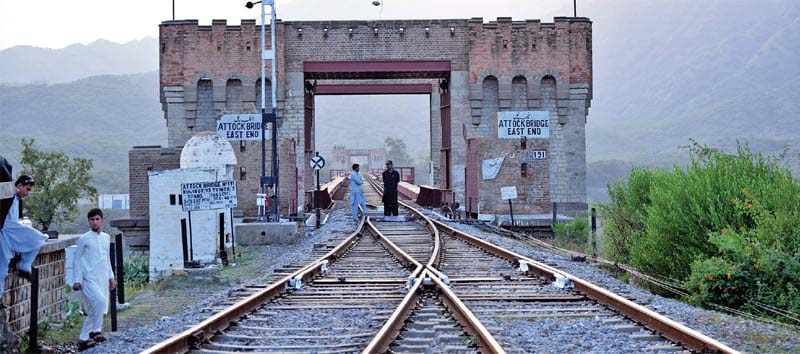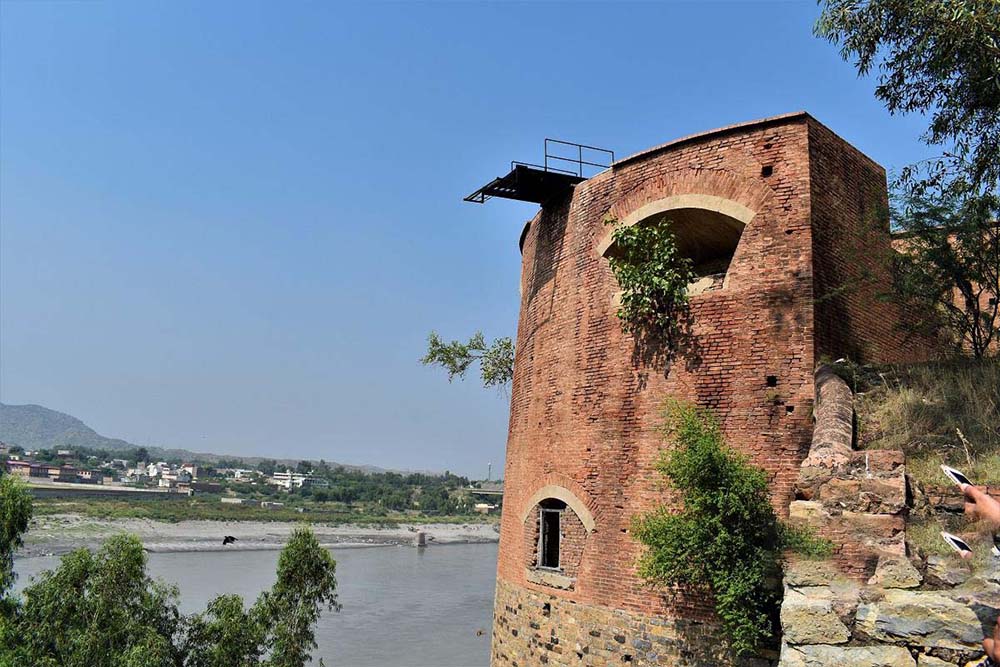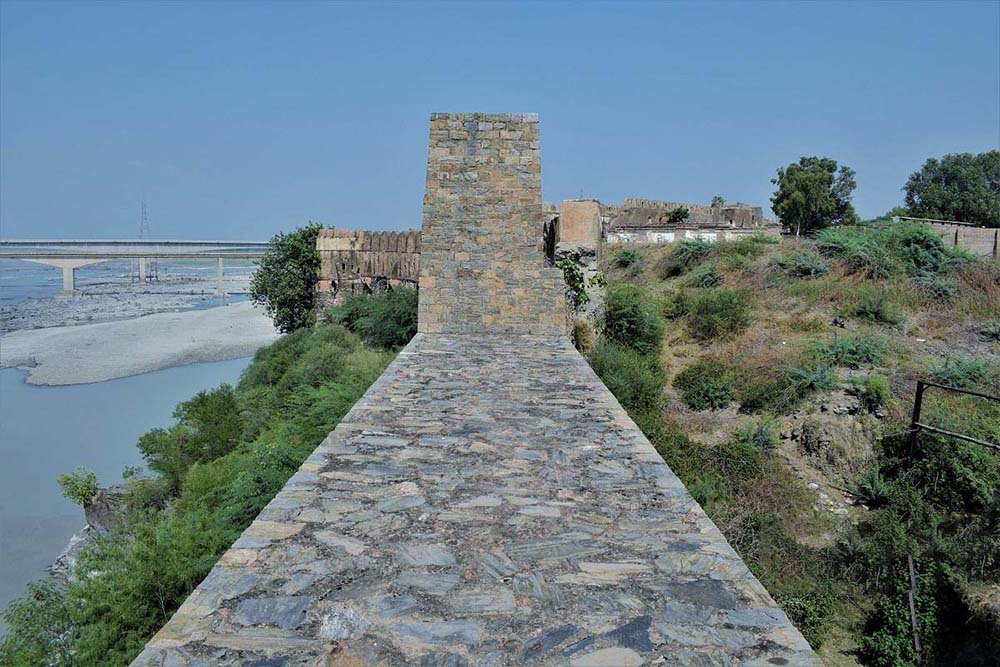
Written by: Muhammad Awais
Posted on: January 25, 2021 |  | 中文
| 中文
The view of the fort during sunset
As with many smaller places in Pakistan, the small, unassuming town of Attock is more than meets the eye. The Old name of Attock was ‘Attock Khurd’ or ‘Little Foot of the Mountain’, known best as the confluence of the Rivers Indus and Kabul. Attock has been a layover town for centuries, as people like Alexander the Great, Ibn-e-Battuta and Hwen Tsang have crossed through this area and mentioned it in their accounts. Many of the Subcontinent’s great powers have fought over Attock’s most famous and striking feature: its magnificent fort that overlooks both the river and the hills of the Pothohar Plateau.
Attock Fort was made between 1581 and 1583 CE under the supervision of Khwaja Shamshuddin Khawadi, a minster during the reign of Mughal Emperor Akbar. The Fort was strategically made in typical Mughal architecture, with the river on one side and the harsh jungle on the other. At the time, the location of the fort was known as the Subcontinent’s entrance into Central Asia, as the flow of the River Kabul created a natural corridor between Kabul and India, through the Hindu Kush range.
With the arrival of Persian forces under Nadir Shah in 1738, Mughal rule in North India came to an end, and the fort was occupied by new rulers. Until 1758, Attock Fort remained a stronghold of the Afghan Durrani empire, when Maratha leader Peshwa Raghunath Rao attacked the military bastion. After a few battles with the Maratha forces, the Durrani empire emerged victorious and retained control of the fort. The next empire to challenge the Afghans were the Sikhs, who engaged the Afghans in a fierce battle in 1813, after secret negotiations between the two powers broke down. Under the command of the fearsome Sikh general Hari Singh Nalva, the Sikhs came out victorious, and cities all across the empire were lit in celebration of this military victory.
Unfortunately, the Sikh’s control over Attock was short lived. The British East India Company took control of the fort after defeating the Sikhs in the second Anglo-Sikh War of 1849. Subsequently, the town was renamed Campbellpur in honor of British General, Sir Colin Campbell, and a railway line was built to connect the town to the rest of the empire. The Star of David was added to the fort walls, the signal the arrival of a new empire in the area.
When Pakistan became independent in 1947, Campbellpur became Attock once more, and many of the Hindus and Sikhs living in the area emigrated to India. However, the Government understood the strategic importance of the fort’s location, and handed over the premises to the 7th Division of the Pakistan Army. In 1956, it was given to the Special Services Group (SSG), a special operations force of commandos. Presently, the fort is still in control of the SSG and a large section of it is not open to the public, as it is still a military base.
The fort has four major gates: Dehli Gate, Mori Gate, Lahori Gate and Kabuli Gate, which lead to various corners and entrances of the building. Because of the high arches, the fort is home to many bats that have taken refuge in the darkness and solitude of the building. In addition, a large brick structure stands close to the edge of the fort, which was then known as the Hangman’s Platform (Phansi Ghat). Prisoners would be hanged from the platform while the crashing river was let into the structure and would sweep the bodies away into the river.
One advantage of restricting access to the fort is that the condition is still relatively well-maintained. The surrounding walls of the fort remain intact, and one can still see the large stairs and pathways meant for the elephants. Multiple stairways lead to the top of the fort, which gives the viewer a breathtaking panoramic view of the area, away from the noise and hustle and bustle of the crowds outside the fort. There are also barracks and living quarters within the fort that are in good condition. Secret passageways also lead into the multiple underground prison cells and chambers. Many political prisoners throughout Pakistan’s history have been detained there, including the ex-Prime Minister Nawaz Sharif, who was kept as prisoner soon after General Musharraf’s takeover.
What is notable about this fort is that unlike other Mughal-era buildings of the time, there is no non-Muslim house of worship on the premises. Oftentimes, non-Muslim houses of worship were made to promote peace and tolerance towards non-Muslim soldiers of the empire. However, there exists a Hindu temple on the edge of the river outside one of the gates, which dates back to the time of the old village of Attock. The temple is on the edge of the two rivers and there is a peaceful atmosphere at this site, despite the fact that so much history and violence has occurred here.
While it is unfortunate that the site can never be fully opened to the public, there are also other sites which tell Attock’s history, like the colonial train station. The fort remains a fascinating reminder of the area’s strategic importance, and the invaders who passed through it. One can always visit the place, sit by the river and enjoy the local fish, while beholding the mighty fortification that seems undisturbed by the passage of time.



You may also like: